Spanning 46,055 square miles, Pennsylvania has a wide range of habitats that are perfect for animals of all sizes and shapes. Snakes in particular frequently inhabit the state — both on the land and in the water. There are 21 species in Pennsylvania, including three that are venomous. Though some — such as the red-bellied snake or the milksnake — are brightly colored, others are brown so that they can blend in with their environment. Let’s take a look at the brown snakes in Pennsylvania and discover where they live and which ones are dangerous.

1. Queen Snake (Regina septemvittata)
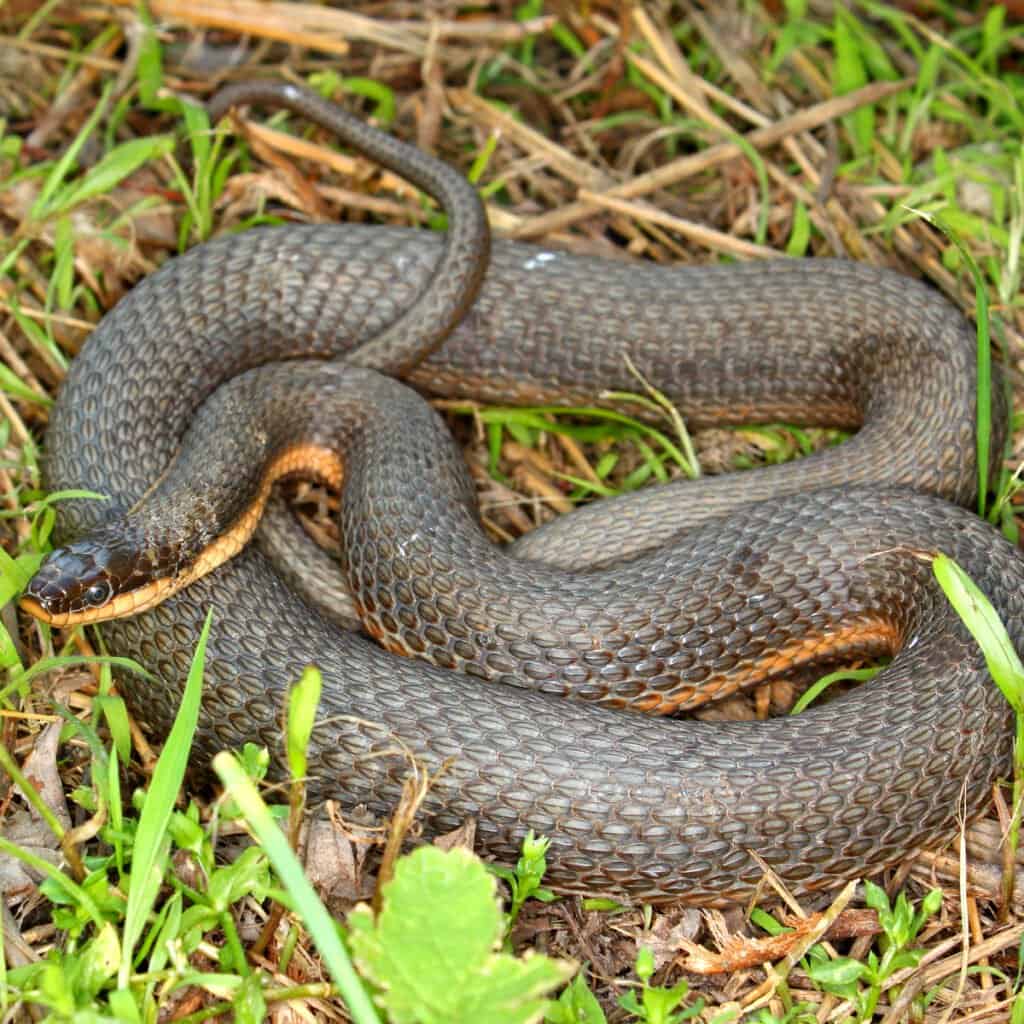
Queen snakes prey mainly on crayfish and have adapted to reach between rocks for their prey.
©Jason Patrick Ross/Shutterstock.com
First up is the queen snake, which is a species of special concern within Pennsylvania. They are semi-aquatic and live in and around streams, rivers, ponds, and small lakes. However, they occur in two separate populations in the eastern and western regions of the state. Queen snakes are 14 to 23 inches long and have a brown body with four dark stripes on their belly. They also have three stripes on their back, but these are more visible on juveniles than on adults. Queen snakes prey mainly on crayfish and have adapted to reach between rocks for their prey, as they have thicker scales underneath their chin and on the top of their head to protect them.
2. Timber Rattlesnake (Crotalus horridus)
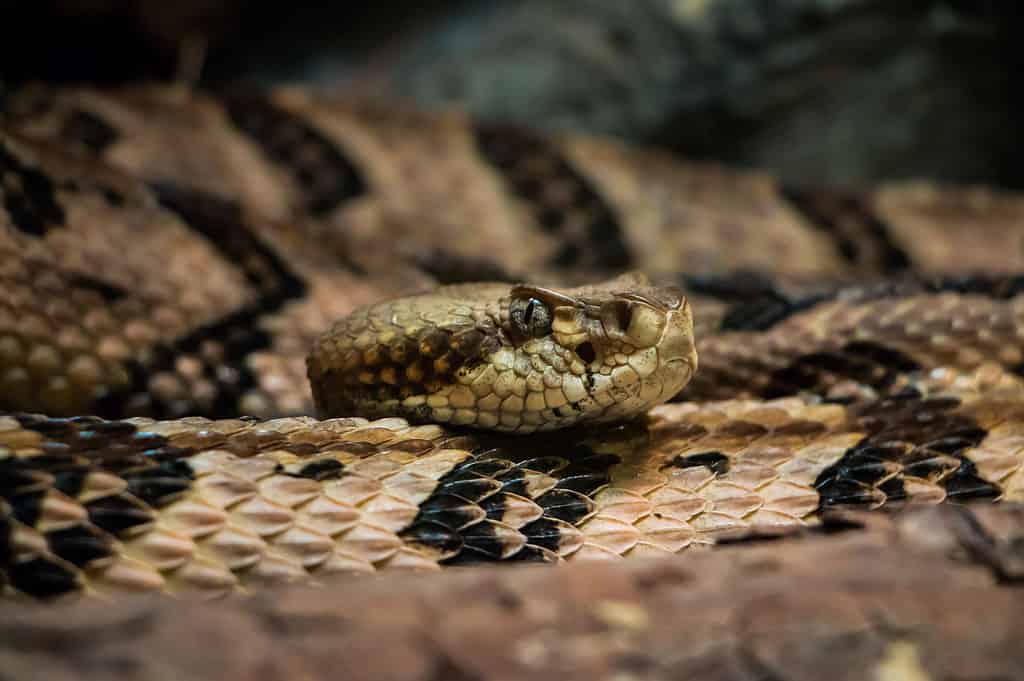
Timber
rattlesnakes
live statewide and can be found in forests and on rocky hillsides.
©Dennis Riabchenko/Shutterstock.com
One of the most dangerous brown snakes in Pennsylvania is the timber rattlesnake, which has long fangs and a high venom yield. Timber rattlesnakes are 3 to 5 feet long and have dark brown bodies and a series of darker brown — sometimes black — crossbands. However, there is also a “black phase,” which consists of black cross bands over an almost black ground color. Timber rattlesnakes live statewide in forests and on rocky hillsides. Pregnant females in particular favor rocky outcrops where they can bask in the sun. These are commonly called “basking knolls.”
3. Worm Snake (Carphophis amoenus)
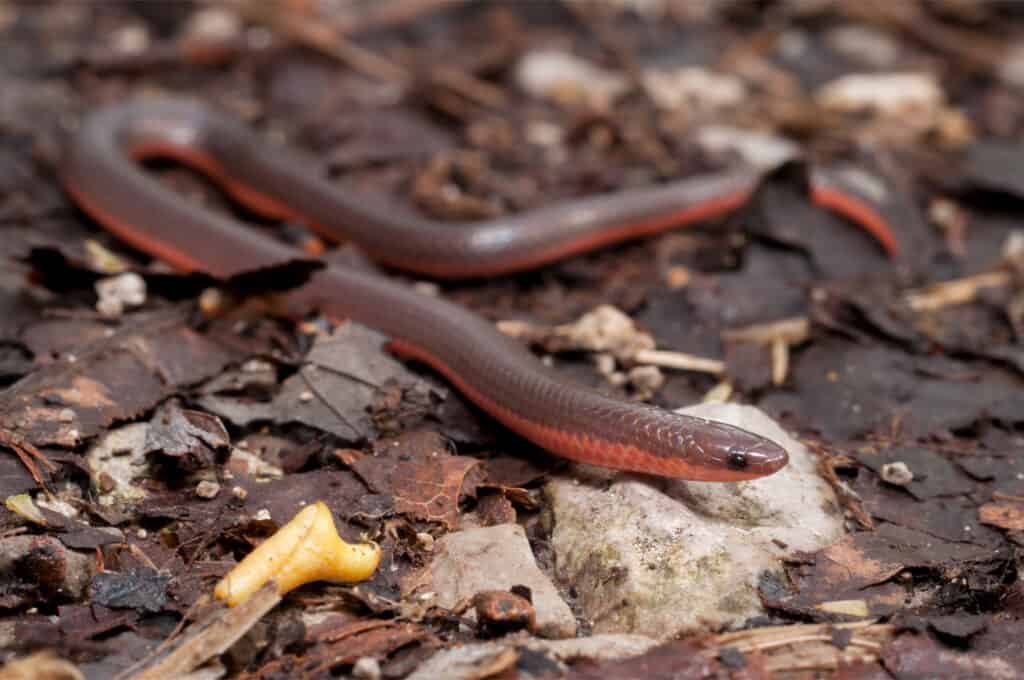
Worm snakes are rarely seen, as they are primarily burrowers and spend much of their time underneath rocks or buried in the leaf litter.
©Mike Wilhelm/Shutterstock.com
The worm snake is a small, non-venomous snake which typically reaches 7 to 13 inches long. Worm snakes have slender brown bodies with smooth dorsal scales and a pinkish colored belly. They only occur in the southeastern corner of the state in forests and woodlands. However, they are rarely seen, as they are primarily burrowers and spend much of their time underneath rocks or buried in the leaf litter. Worm snakes are not dangerous, but they do produce a foul-smelling musk. As they are so small, they prey mainly on earthworms and have a lot of predators.
4. Eastern Copperhead (Agkistrodon contortrix)
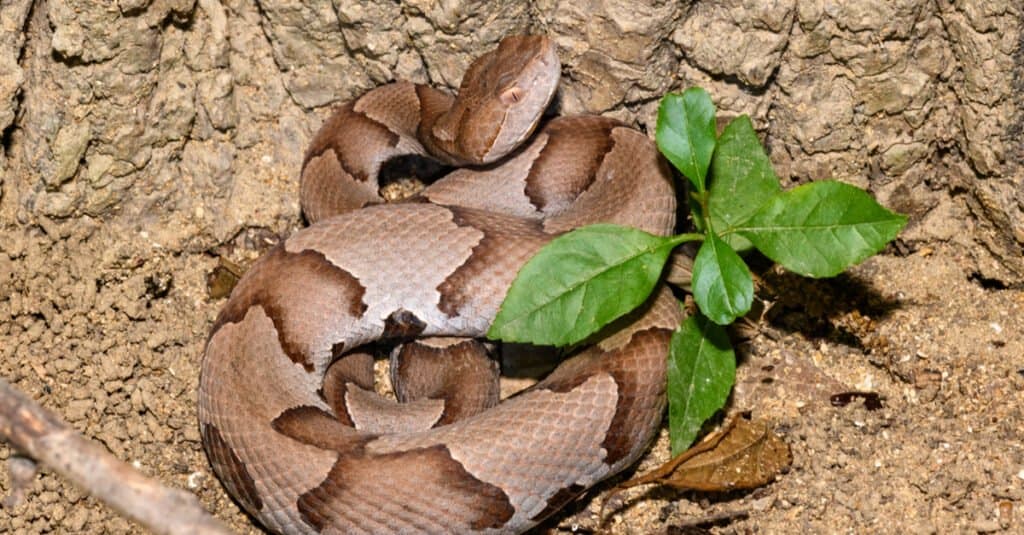
Copperheads have tan to pinkish brown bodies which are overlaid with a series of reddish-brown markings in the shape of an hourglass.
©Jeff W. Jarrett/Shutterstock.com
The eastern copperhead is another venomous snake that occurs in Pennsylvania, although they typically only inhabit the lower two thirds of the state. Copperheads are typically 20 to 36 inches long and have tan to pinkish brown bodies with a series of reddish-brown markings in the shape of an hourglass. Copperheads live in a variety of habitats — including forests, fields, and rocky hillsides. They prey on a range of animals, but rodents, lizards, and other snakes make up the majority of their diet. Although they are pit vipers their venom is one of the weakest types and, as such, they are not as dangerous as some of the other venomous snakes.
5. Dekay’s Brownsnake (Storeria dekayi)
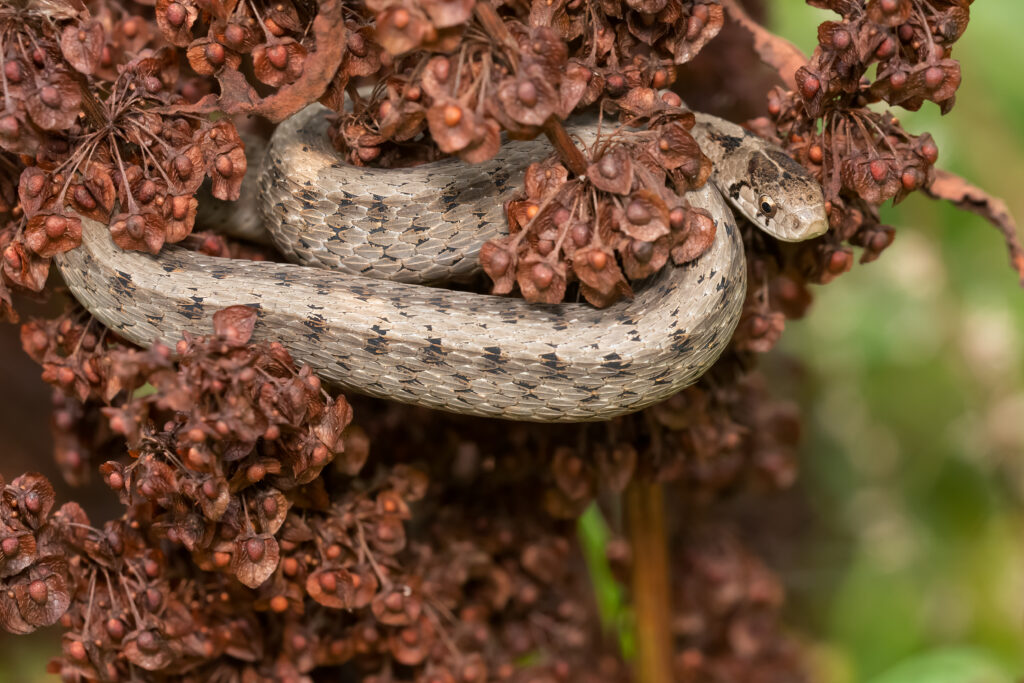
Dekay’s brownsnakes are light brown and have a lighter stripe along their back with black spots on either side of it.
©Paul Reeves Photography/Shutterstock.com
A particularly small brown snake in Pennsylvania is Dekay’s brownsnake which is only 9 to 13 inches long. Dekay’s brownsnakes are light brown and have a lighter stripe along their back with black spots on either side of it. They are typically nocturnal and prey on soft-bodied animals such as worms and slugs. Dekay’s brownsnakes are adaptable animals and live in a variety of habitats, including grasslands, forests, and wetlands. They are not dangerous, and it is rare to even see them as they prefer to remain in safety underneath rocks and logs.
6. Northern Water Snake (Nerodia sipedon)
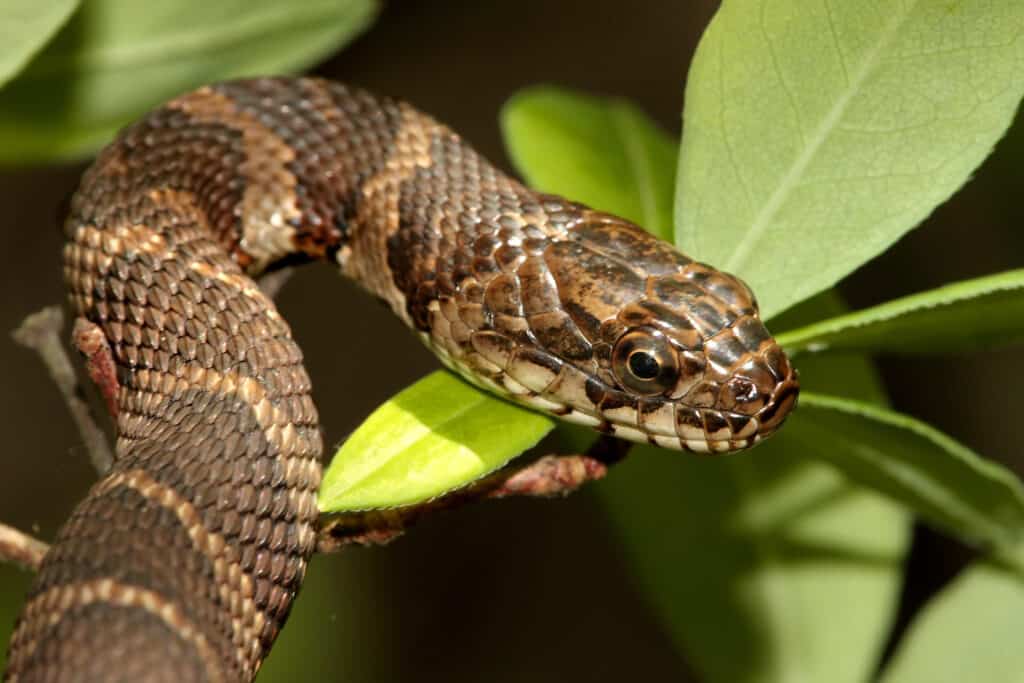
Common water snakes have a mild anti-coagulant in their saliva which prevents blood from clotting.
©Steve Byland/Shutterstock.com
The northern water snake, or common water snake, is a large aquatic snake which frequently inhabits permanent water sources across the state. Northern water snakes can reach 56 inches long and have heavy, dark brown bodies with dark brown to black crossband markings on them. The northern water snake is often misidentified as the venomous cottonmouth in states where they share the same range. Northern water snakes are not venomous, but they are highly aggressive and will frequently bite if they are disturbed. They have a mild anti-coagulant in their saliva which prevents blood from clotting. So, if you are bitten by one of these snakes, the wound will bleed a lot.
7. Massasauga Rattlesnake (Sistrurus catenatus)
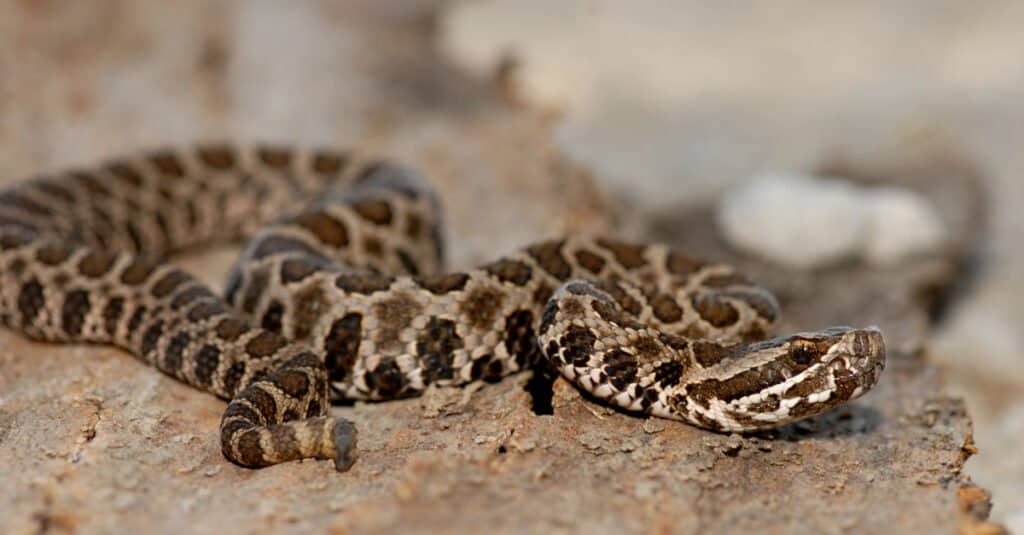
Massasauga rattlesnakes have cytotoxic venom, which can cause extensive damage and scarring to tissue even though it is relatively weak.
©Rusty Dodson/Shutterstock.com
The third venomous snake in Pennsylvania is the massasauga rattlesnake which lives only in the northwest region of the state. Massasaugas are 24 to 30 inches long and are a grey to tan ground color. They also have a row of large spots along their back and three rows of smaller spots on either side. Massasaugas inhabit swamps, wetlands, and other low-lying areas with poorly drained soil. Massasaugas prey on a range of small mammals, birds, lizards, and amphibians. They have cytotoxic venom, which can cause extensive damage and scarring to tissue even though it is relatively weak.
8. Smooth Earth Snake (Virginia valeriae)
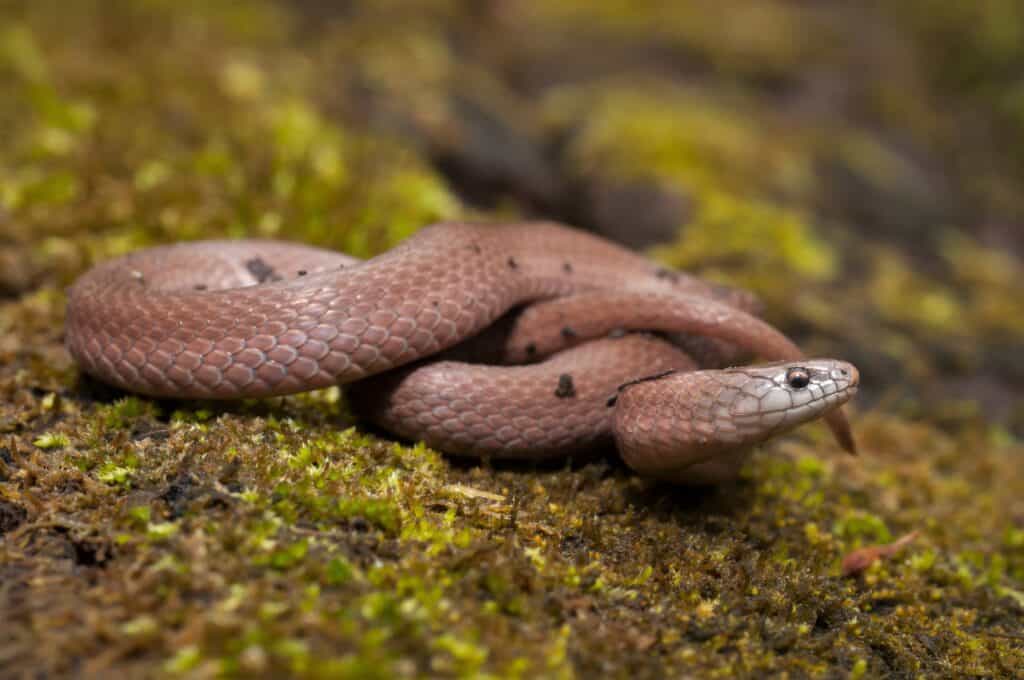
Smooth earth snakes are fairly rare in Pennsylvania and only live in scattered locations across the state.
©Mike Wilhelm/Shutterstock.com
Another small snake is the smooth earth snake, which attains lengths of between only 7 and 10 inches. Smooth earth snakes are reddish brown with several small black dots on their head. They also have smooth dorsal scales. Smooth earth snakes live in forests and woodlands but spend much of their time hidden away underneath logs, rocks, and leaf litter. They are also fairly rare in Pennsylvania and only live in scattered locations across the state. Smooth earth snakes are not dangerous and eat only small animals such as slugs, worms, and insects. Due to their small size, they are regularly preyed on by other animals — including birds, foxes, and other snakes.
9. Common Garter Snake (Thamnophis sirtalis)
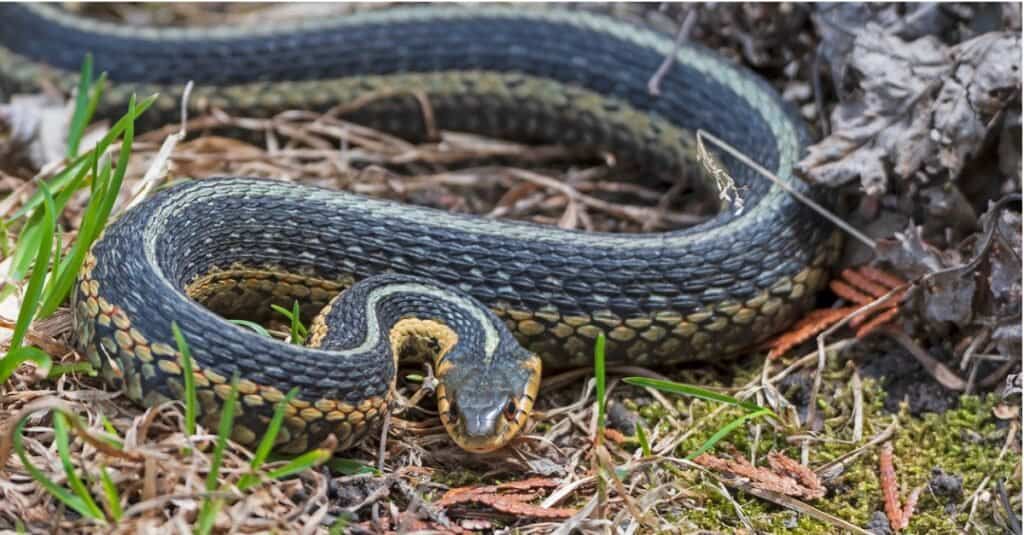
Common garter snakes are not truly venomous, but they have a mild venom-like substance in their saliva that they use to incapacitate their prey.
©iStock.com/Wildnerdpix
One of the most common snakes in Pennsylvania is the common garter snake, which lives in virtually any habitat. This includes fields, forests, swamps, and urban areas, although they are not usually far from water. They are typically 20 to 28 inches long and can be green, black, or brown. They also have a yellow or cream belly and several yellowish stripes along their body with rows of red or black spots between them. Common garter snakes are not truly venomous, but they have a mild venom-like substance in their saliva that they use to incapacitate their prey. However, the only effects that this has on humans is a mild itching or burning sensation and localized swelling. Common garter snakes have a varied diet and prey on a range of mammals, birds, snakes, fish, and amphibians.
Summary Of The 9 Brown Snakes In Pennsylvania
| Rank | Brown Snake |
|---|---|
| 1 | Queen Snake |
| 2 | Timber Rattlesnake |
| 3 | Worm Snake |
| 4 | Eastern Copperhead |
| 5 | Dekay’s Brownsnake |
| 6 | Northern Water Snake |
| 7 | Massasauga Rattlesnake |
| 8 | Smooth Earth Snake |
| 9 | Common Garter Snake |
The photo featured at the top of this post is © Rusty Dodson/Shutterstock.com
Discover the "Monster" Snake 5X Bigger than an Anaconda
Every day A-Z Animals sends out some of the most incredible facts in the world from our free newsletter. Want to discover the 10 most beautiful snakes in the world, a "snake island" where you're never more than 3 feet from danger, or a "monster" snake 5X larger than an anaconda? Then sign up right now and you'll start receiving our daily newsletter absolutely free.
Thank you for reading! Have some feedback for us? Contact the AZ Animals editorial team.






